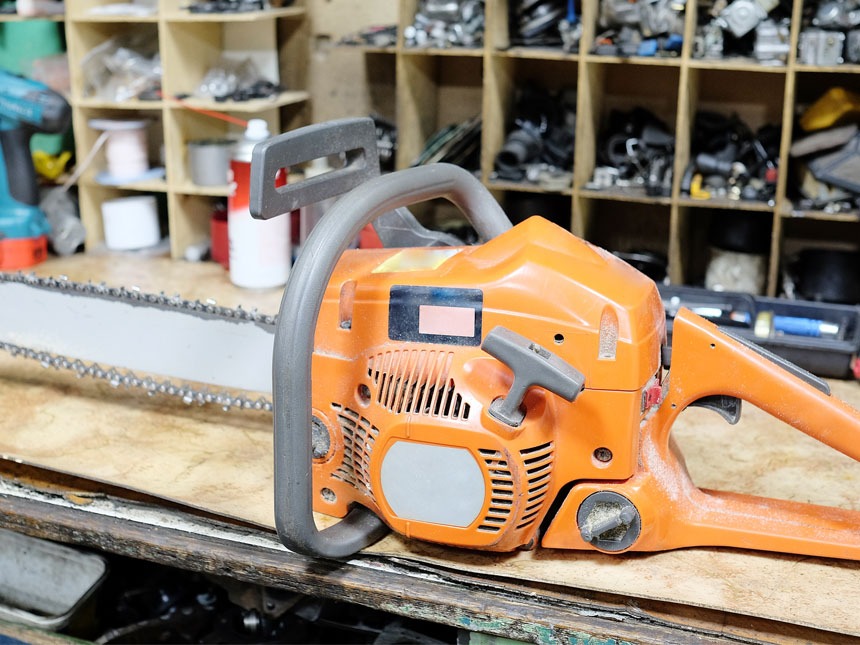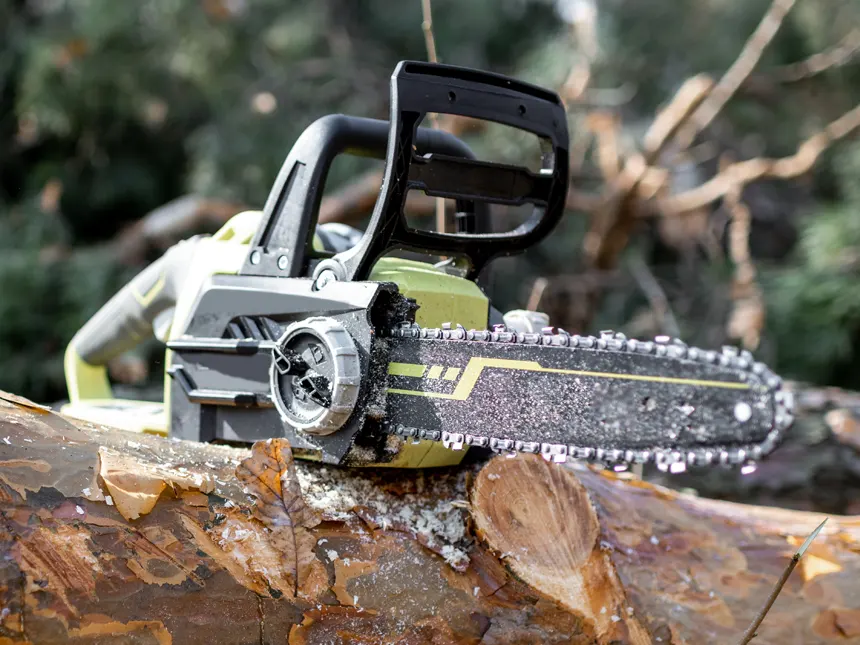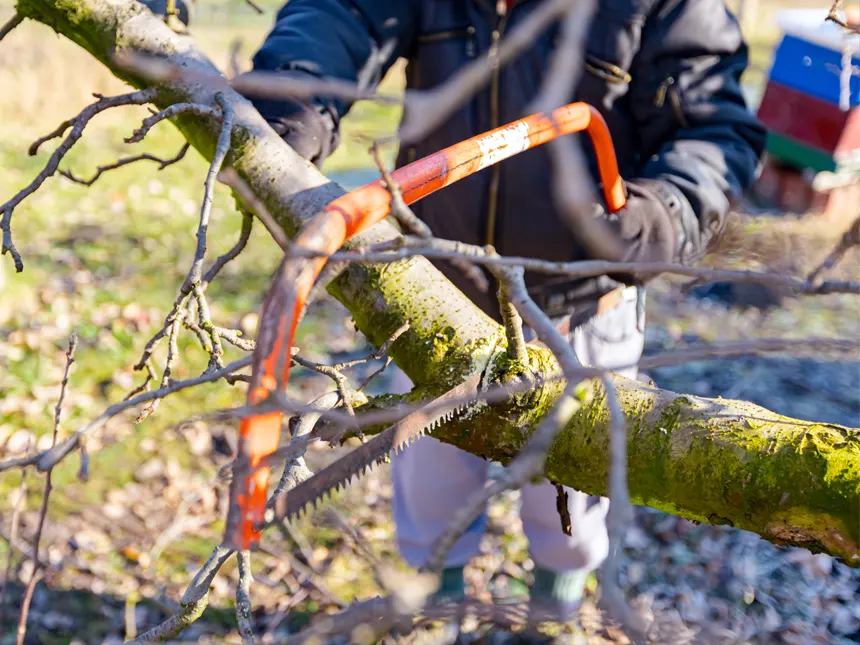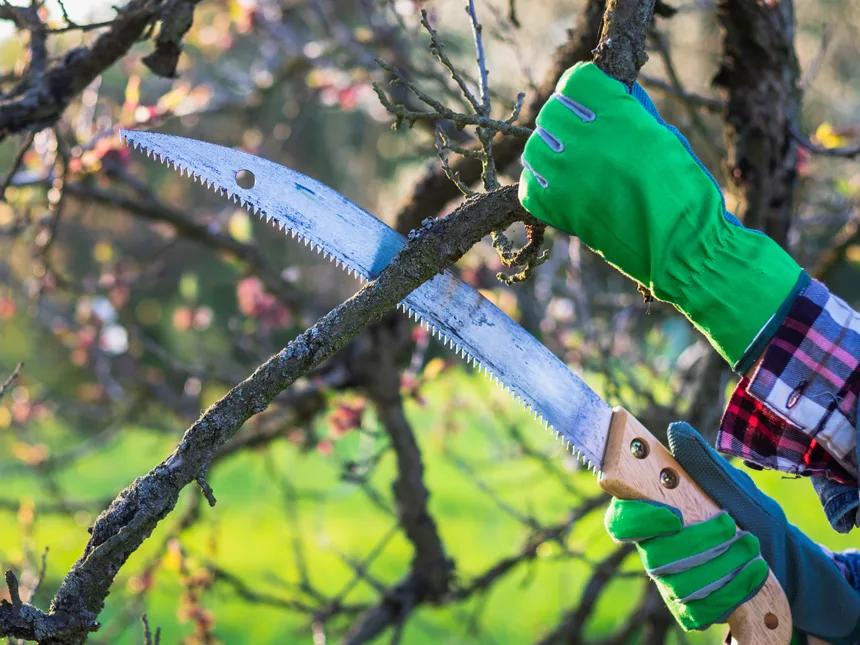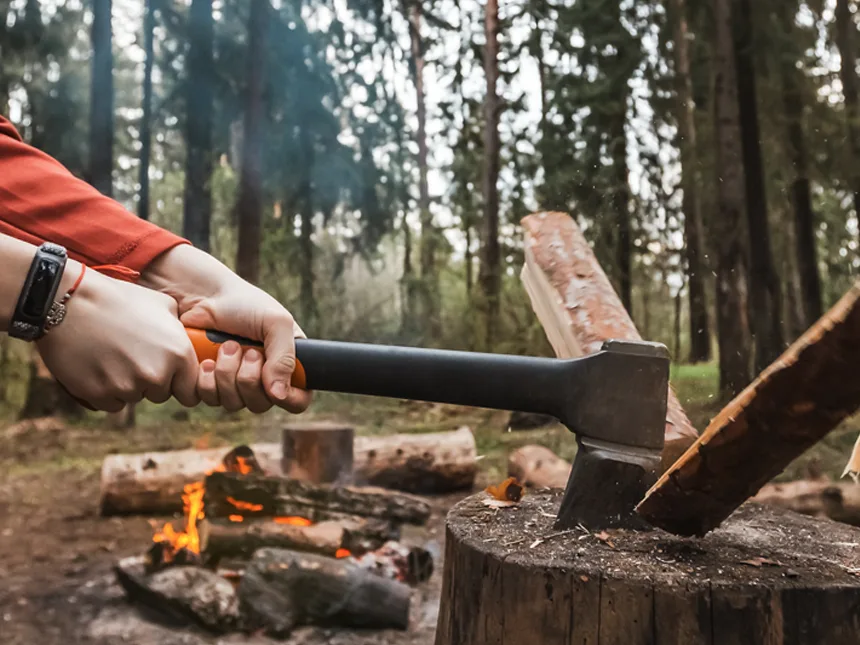Elm Firewood: Is It Any Good?
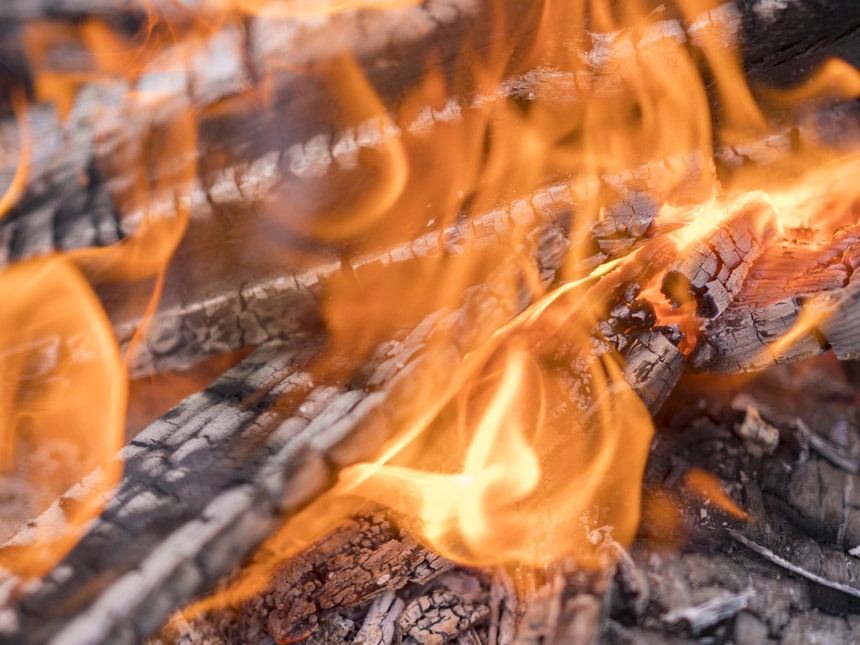
Timber Gadgets is reader-supported. We may earn a commission if you buy through the links on our site.
Elms are semi-deciduous and deciduous trees from the flowering plant genus Ulmus in the plant family Ulmaceae. It is commonly found in America.
The quality of Elm firewood is poor compared to others like beech, hickory, oak, or maple. However, it’s abundant in many parts of American, which makes it something worth considering – depending on your situation.
Elm produces a decent fire and quality coal, but heat output isn’t very high. Its fibers cling to each other, so it has its value for fibers adhesion and finds many uses in craft, but the same quality makes it difficult to split.
You can use an axe to split it, but fibers will not separate easily, and it takes a good effort. Anyway, you are going to have a hard time splitting Elmwood.
Its abundant availability and easy to burn qualities make it a decent firewood whereas low heat, average smoke and smell make it an average quality firewood as compared to other top firewood species. So overall it is an average performing firewood. It usually does not absorb water easily, but firewood can be prone to rotting.
Smoke is produced by all kind of firewood, but the primary rule is, never burn it wet. High moisture content uses a lot of heat energy to vaporize the moisture, and firewood produces even higher smokes.
Table of Contents
Is Elm Good Firewood?
Some people will say it is good, but there are many species that perform much better than Elmwood.
You can find dead trees around you due to Dutch Elmwood disease. Dead trees are usually dry, so they are almost ready to use, and you can burn them, however you should always care that moisture level of these for seasoned firewood should not be above 20 percent because that firewood will not burn good and produce a lot of smoke.
So, the answer is ‘average’, if you have it, go burn it. If you can easily find a better firewood would like Oak, Beechwood or Black Lotus then opt for using them.
Burn Qualities of Elm
There are many Elmwood varieties and their heat output value differs slightly but on average 20 million BTU is the standard output which places it at lower than top-tier firewood however it is a better performer than many low heat output species, so it is a middle tier performer in heat production context.
- Siberian Elm: 20.9 BTU
- American Elm: 20. BTU
- Red Elm: 21.6 BTU
This value of BTU or British thermal unit is the amount of heat units produced if we burn a full cord of seasoned firewood. The size of cord is 8 x 4 x 4 ft or 128 cubic ft.
Creosote
Creosote black tar like material which is produced in burning wood in variable quantities depending upon type of wood, and it gets into air with smoke and can deposit and build layers inside your chimney and cause chimney problems.
The quantity of creosote produced depends on two factors, first it is the quantity of sap in the fire wood being burnt. Hardwood like Elmwood have usually low quantities of sap and hence very little creosote is produced, and less chimney problems are observed. Whereas firewood with high sap content like Pine produce great quantities of creosote in smoke, and cause more problems and lower quality of firewood.
The second important factor in creosote buildup is the moisture level of firewood. If wood is not seasoned completely, and moisture level is above 20 percent, any type of firewood will produce higher creosote as compared to completely seasoned firewood of the same kind.
Creosote poses two types of problems, first is narrowing of chimney which may reduce ventilation and second is chimney fires because creosote is a flammable material and if deposited in fair amount can start burning thus creating chimney fires.
So how to avoid creosote related problems always burn properly seasoned firewood with low sap content, low moisture and seasonally clean your chimney for any build up that gets deposit inside your chimney.
Smoke
Smoke is an important mark of firewood quality. People usually like to burn low smoke firewood species.
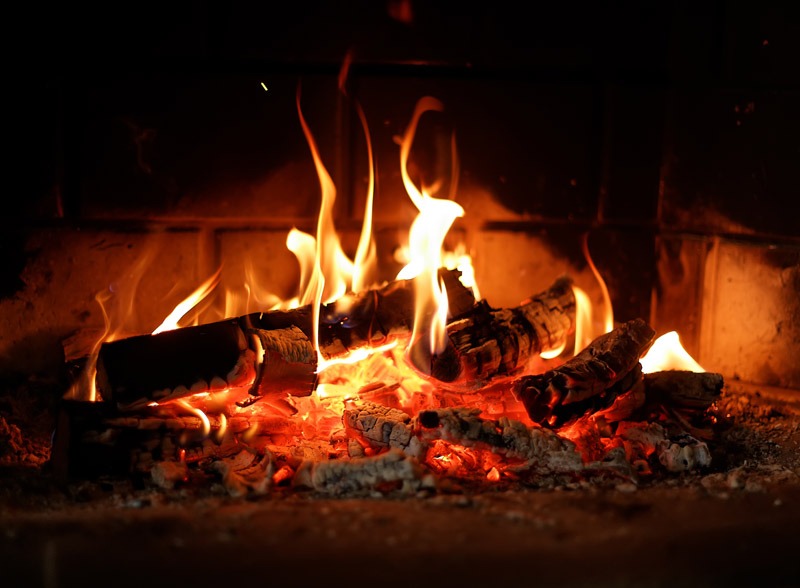
Elmwood produces moderate quantity of smoke and performs intermediate to top quality and bad fire woods. Keep in mind that moisture content plays an important role here as well because any type of firewood if burnt before drying can lead to higher smoke content as compared to dried wood.
Smell
Smell carries a dominant aesthetic factor, as what you burn, you smell. While many firewood smells great, like cherry or hickory are preferred for this character. These firewood are also preferred for their use in barbecue and food preparations as they impart their smell to the food. Some firewood may smell little or seamless, adding no or little effect to their value.
Elmwood, if seasoned properly, can have a very low pleasant smell or undetectable. This is the ideal case scenario. However, Elm has a property of absorbing the scent of the surrounding where it is grown.
So this may be unpleasant if it is grown near as sewer or swampy area. It is going to smell like the same in its smoke. So always be aware of the area from where it is harvested, and moisture content should be less. Otherwise, you will complain.
Coals
Of course, we love coal while enjoying firewood. It is an important factor determining the firewood quality. Good quality coal means it will burn for a long time, producing good heat and will not fade fast. Usually, coal quality is interlinked with the heat production quality.
Elmwood still performs fairly good in this segment, it produces good quality coal which burns long and provide you with good fire. Although it is not as good as premium firewood but still it tops as compared to other similar species.
Comparing Elm firewood to others
- Firewood is relatively hard to split.
- It produces less heat as compared to top firewood.
- It has good quality coal.
- It smells very little but absorbs the smell of the surrounding where it is grown, so it depends upon environment.
- Produces average quantity of smoke and low creosote.
- Along these factors, Elm is found abundantly in America, so it is preferred by many as firewood.
| Species Wood Type | BTU’s (Million) | Weight Lbs/Cord |
|---|---|---|
| Osage-Orange | 32.9 | 4728 |
| Black Locust | 27.9 | 4016 |
| Beech | 27.5 | 3760 |
| Mulberry | 25.8 | 3712 |
| Black Walnut | 22.2 | 3192 |
| Birch | 20.8 | 2992 |
| American Elm | 20.0 | 2872 |
Splitting Elm Wood
Ok now we come to the trickiest part in preparing Elm firewood that is splitting the firewood into pieces. Once wood is cracked by maul, its stringy fibers come into action, hold the wood and don’t let it apart.
Splitting is actually the preparatory phase for seasoning, and it also properly sizes the wood to fit in your stove and burn smoothly. Splitting also shows that all pieces of your board burn at almost the same time and produce coal simultaneously.
Elm is a hardwood, it is dense and packs high mass in low volume, making it good firewood to burn. At the same time, it is very difficult to split through regular means, however if you have a wood splitter hydraulic splitter then your task is almost done.
If you use an axe and start from the edge, this may work somehow but its stringy and adhesive fibers offer great resistance, and they do not let the wood apart until they are cut.
Related: Best Axe for Splitting Wood
Preferably used hydraulic wood splitter, it will get your job done more conveniently.
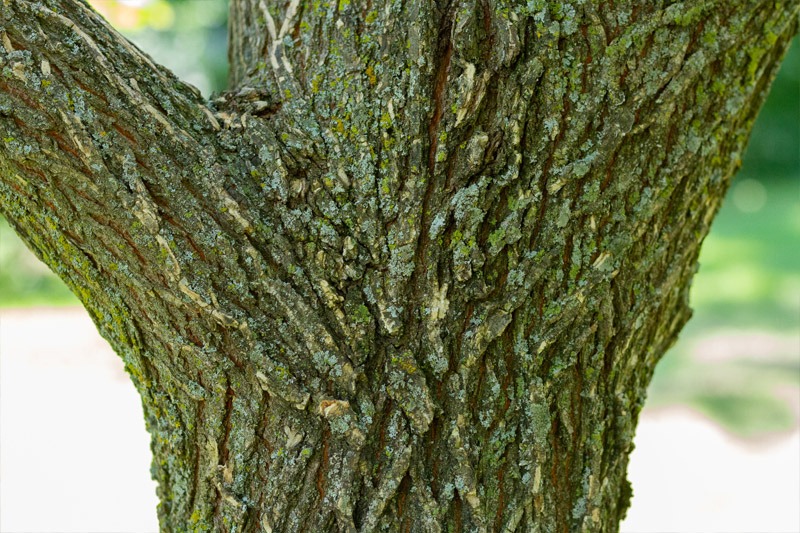
Tips for Splitting
1. Split the food properly, as it increases the surface area exposed to evaporate the moisture, and bark may also be a barrier to the vaporization of moisture from wood.
2. Now, while you have to put your wood into stacks, make sure they are elevated at least half a foot or more from ground level. This will increase the air circulation in the woods racks and also stop any moisture reaching from ground level.
3. Location of your firewood stack should be in an open place away from building, hedges or wall. It is better if you find an elevated field for this purpose.
4. Your rows of stacked firewood should far from each other. It will hinder the air movement through them, which will reduce the escape of moisture and lengthen your seasoning time. Another care which you should take while making rows is that you should arrange them parallel to the wind direction in your area, as it will make it easier for air to move through the racks and remove more moisture from the Firewood
5. For openly stacked firewood we recommend you to cover them on top, do not cover its sides otherwise it will rather trap the moisture inside and make it difficult to dry. Top cover will save your wood from rain or dew.
Wood can also be dried in specially made kilns, they speed up the process manifold, and you get your required moisture level in less time.
How Long to Season Elm Firewood
Firewood burns, different types of firewood have burning qualities which are inherent to their kind, so we cannot control them much, however for any firewood species to burn nice and problem free the most important role we can play is to season it properly.
Elmwood can take 6 to 8 months to get seasoned, but better season it for at least one year. To get a quality firewood, it is recommended to season for two years.
Seasoning depends upon various factors, some of which are related to practice and other related to environment. It greatly depends upon the area, temperature, duration of sunshine, humidity and wind speed.
In practices, you need to properly split and make the wood into racks/stacks with proper air passage through them.
What is “seasoning” Firewood?
Seasoning means to reduce the moisture level of firewood under the recommended level of less than 20%. You should use a moisture level monitor to make sure that the required moisture level is achieved uniformly throughout the wood.
Properly split wood is placed in openly in the field or backyard to make the stacks, so it can get proper sunshine and air to dry its moisture.
Identifying Elm Trees

Summer deciduous and deciduous trees make a good shade and can grow as high as 100 ft and 75 ft wide. There are 35 Elm species.
Some species produce an umbrella shaped canopy, while others grow upright. Leaves are oval shaped and have toothed edges. Leaves grow in an alternate manner. These leaves and ridged bark are the identification mark.
Overall Appearance
You can easily identify Elm firewood by seeing a cut wood. It will have annual rings, as all the trees have. But the difference is that these circles will not be circular as in other trees, but they will show a wave like pattern in their circles. Annual rings show the growth of a plant. They show the age of a plant as each year cambium divides and adds a new circle.
Dutch Elm disease is serious threat, it may cause death of majority American Elm trees. It grows into tree’s sapwood. It is better to identify the sick trees infected trees and cut them to avoid further infestation. Many new varieties show higher resistance toward the disease.
Leaves

Elm leaves are oval with the pointed end and have serrated edges. Elm leaves have distinct green veins. One half side of leaf can be larger than the other side.
Leaves are light to dark green and turn into the or golden yellow in fall season. Most of the species have four to six inches long and up to 2.5 inches wide leaves.
Bark
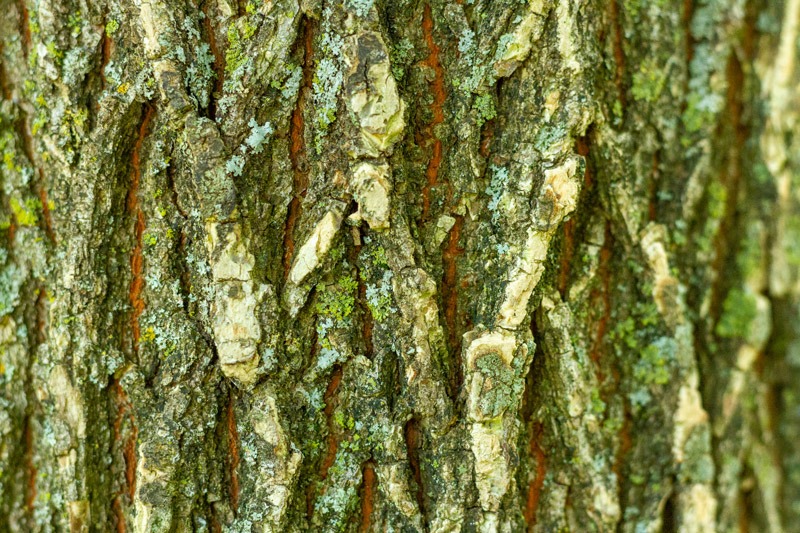
Elm firewood has scaly dark furrows which run vertically and is grayish brown. Elm trees are sometimes termed as lacebark Elm, which depicts lace like texture of bark.
Summary: Is Elm Firewood Good?
Elm firewood is low quality compared to others. It’s certainly an option due to its abundance, however. American Elm has a BTU of 20.0 per seasoned cord. The smell is decent and so are its coals. Unfortunately, it can be a chore to split and the smoke is less than desirable.
If given the opportunity, opt for something like beech, black locust, hickory, oak, or maple.

